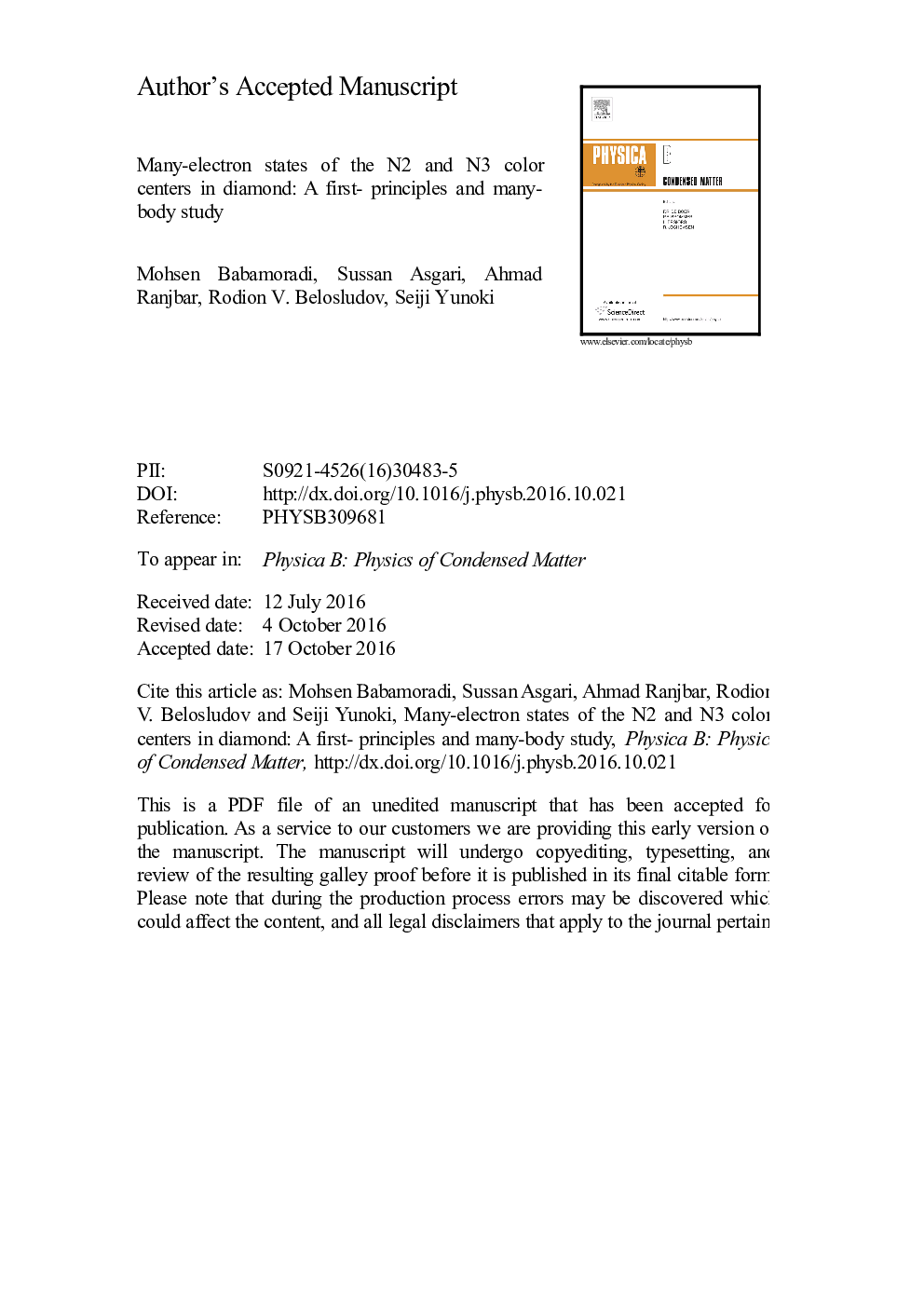| Article ID | Journal | Published Year | Pages | File Type |
|---|---|---|---|---|
| 5492249 | Physica B: Condensed Matter | 2017 | 16 Pages |
Abstract
A new model is applied to calculate the many-body properties of the neutral N3 color center in diamond. This model is based on the first-principles density functional theory (DFT) and cluster method, which is combined with the generalized Hubbard model. In contrast to the previous models for N3 centers, our model does not require the configuration interaction (CI) and molecular orbital (MO) techniques. The N3 defect in diamond is simulated with an empty site next to three substitutional nitrogen atoms in the center of a hydrogen-terminated diamond cluster. The method is shown to be highly accurate for describing the symmetries and spin properties of the ground state and the first dipole-allowed excited state for the N3 center. We obtain the transition energy as 412Â nm for the first dipole-allowed transition, which is in good agreement with the corresponding experimental value as 415Â nm. We assigned the dipole-allowed transition between the first and second excited states as the N2 optical peak, and evaluated the N2 optical peak to be 463Â nm, which is close to the experimental value as 478Â nm.
Related Topics
Physical Sciences and Engineering
Physics and Astronomy
Condensed Matter Physics
Authors
Mohsen Babamoradi, Sussan Asgari, Ahmad Ranjbar, Rodion V. Belosludov, Seiji Yunoki,
